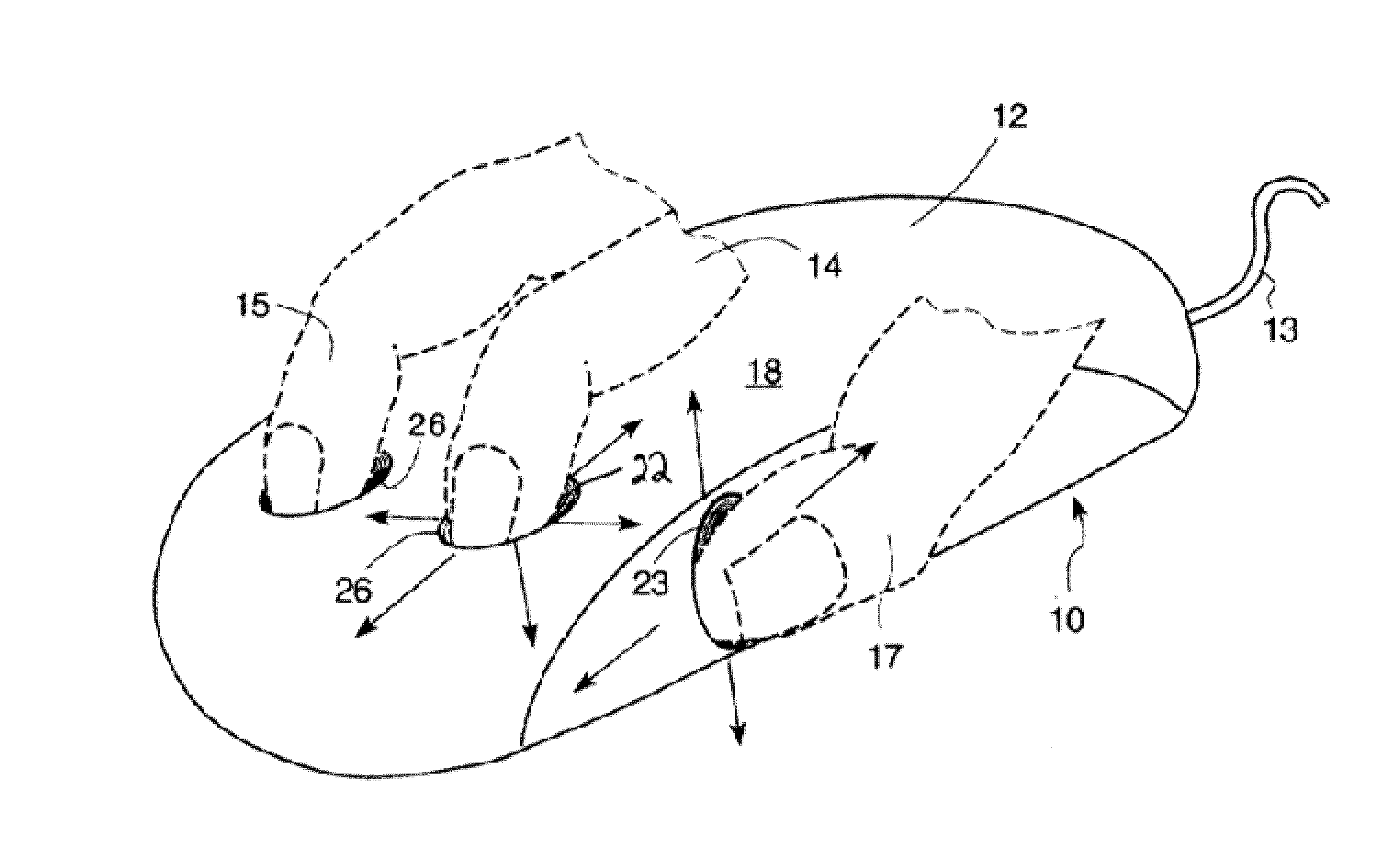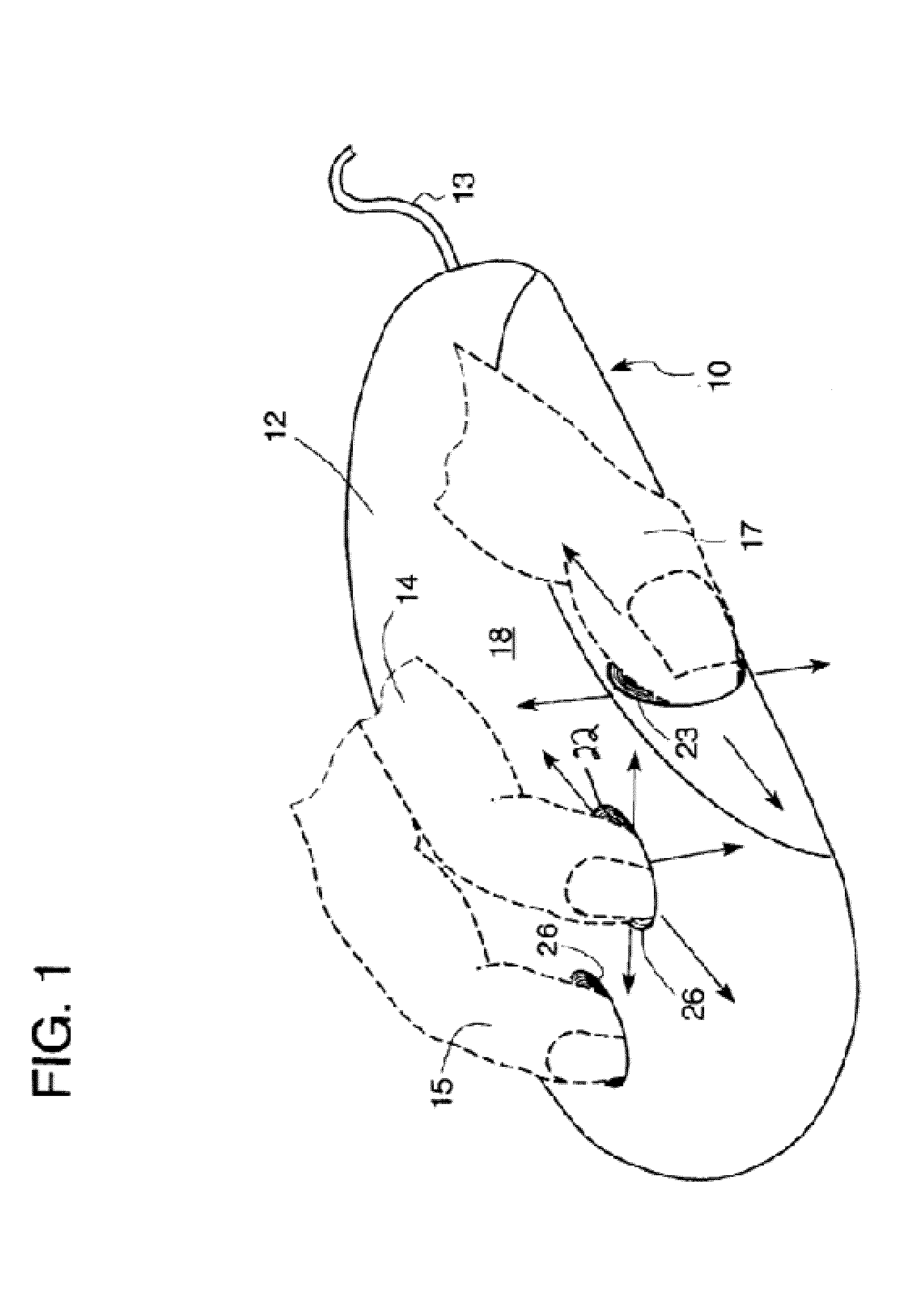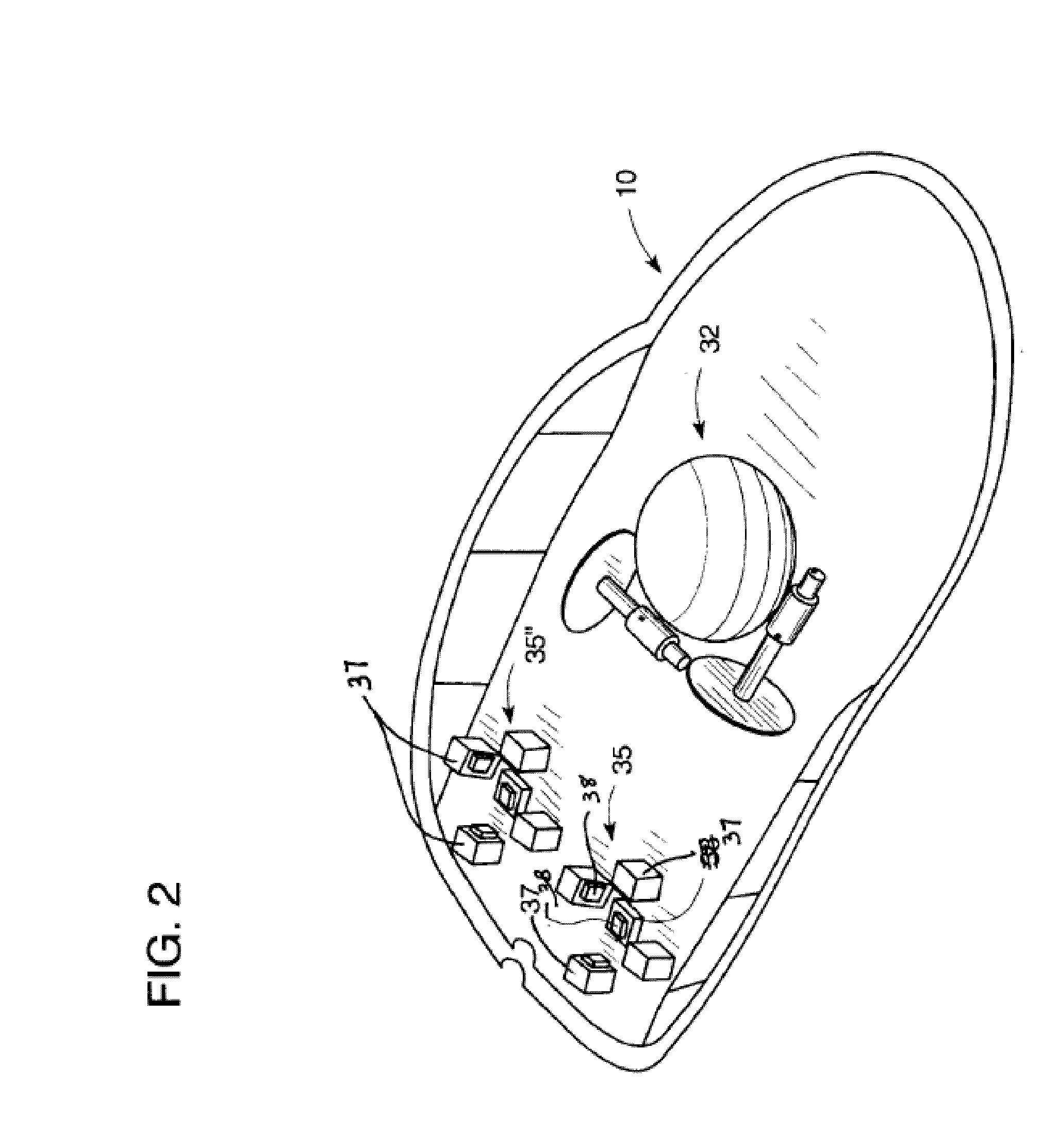Input arrangement for electronic devices
a technology of electronic devices and inputs, applied in the field of input arrangements for electronic devices, can solve the problems of physical damage to users, muscle, joint and nerve damage to users, damage to nerves and muscles, etc., and achieve the effect of reducing stress and increasing input efficiency
- Summary
- Abstract
- Description
- Claims
- Application Information
AI Technical Summary
Benefits of technology
Problems solved by technology
Method used
Image
Examples
Embodiment Construction
[0027]The new ergonomic input arrangements of this invention will now be described in detail with reference to the drawings. The computer cursor control of the invention, as implemented in a generally off-the-shelf mouse, is best understood by reference to FIGS. 1 and 2. Referring to FIG. 1, there is shown a mouse 10 having a housing 12 and a cable 13 for coupling the mouse to a computer (not shown). The mouse 10 is designed for operation by the hand of a user, shown in dotted lines in FIG. 1, including index finger 14, middle finger 15 and thumb 17. The housing 12 includes a generally ovulate-shaped top surface 18 on which the palm of the user rests during operation of the mouse. The surface 18 includes suitably shaped elongated openings 21, 22 into which the tips of the user's fingers extend, and a similar opening 23 in the side wall of the housing into which the tip of the user's thumb 17 extends. The fingers 14 and 15 are located directly above sensor arrangements 35, each of wh...
PUM
 Login to View More
Login to View More Abstract
Description
Claims
Application Information
 Login to View More
Login to View More - R&D
- Intellectual Property
- Life Sciences
- Materials
- Tech Scout
- Unparalleled Data Quality
- Higher Quality Content
- 60% Fewer Hallucinations
Browse by: Latest US Patents, China's latest patents, Technical Efficacy Thesaurus, Application Domain, Technology Topic, Popular Technical Reports.
© 2025 PatSnap. All rights reserved.Legal|Privacy policy|Modern Slavery Act Transparency Statement|Sitemap|About US| Contact US: help@patsnap.com



